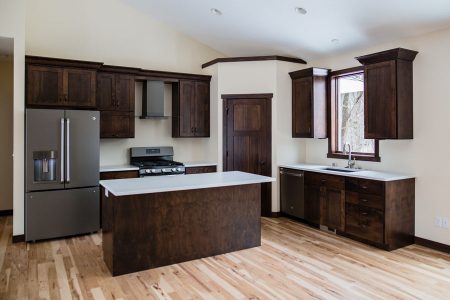There are plenty of different flooring options, but you shouldn’t let yourself be overwhelmed. Instead, you should focus on finding an affordable solution that will look great and hold up well over time.
Hardwood has a long history of use, and it’s one of the most sought after flooring materials to this day. It can complement the decor in any home, whether the space is modern or traditional. Hardwood floors can also increase the value of a property. This flooring is renewable, natural, and resilient. It’s also available in many grain patterns and shades, allowing you to find a design that’s right for your home.
The most popular options for residential floors are walnut, oak, cherry, maple, and hickory. Before deciding on the hardwood species you want for your floors, you should take the time to compare solid and engineered floors. You’ll also want to look at various finishing options. Below, you’ll find more information on finding the best floors for you.
Traditionally, hardwood flooring is comprised from solid wood boards. If you opt for engineered floors, however, you’ll have more options for application. Furthermore, this type of flooring is a little more affordable.
The flooring boards used for solid floors are milled from just one piece of wood. With engineered floorboards, you’ll have floors with a multi-layer base, with a layer of actual hardwood on top. If you opt for solid red oak flooring that’s prefinished, you can expect to pay around $5 a square foot. The cost for engineered flooring of the same type will be around $1 to $2 lower per square foot. It’s important to look at the advantages and disadvantages outside of pricing before making a decision.
Solid Flooring:
* Can be refinished repeatedly. This means your floors can stay in great shape for decades or more.
* Are made to be installed over wood subfloors. Boards are individually positioned and nailed to the subfloor beneath. Because nailing is a necessary part of the process, it can be installed over concrete substrate.
* Won’t work for installations that are below-grade. Because there will be more residual moisture and humidity, the flooring could warp.
* Can cup when humidity levels are high. Since every board is nailed along the edge, boards can press against each other when the wood starts to swell, which can cause them to move upward along the seams. This can leave the floorboards with a cupped area in the center.
* The wood may contract, which can lead to gaps. The wood may dry and shrink over time, which can cause gaps to appear between seams. This can be avoided if boards are able to acclimate to a room’s temperature for a minimum of two weeks prior to installation.
Engineered Flooring:
* Is composed of several thin layers. The layers include resin, polymers, and compressed wood. On the top is a real hardwood layer.
* Is able to be installed over many types of flooring. The planks aren’t nailed to the subfloor beneath. Instead, they are snapped together using grooves located on the sides of each plank. The boards aren’t actually attached to the floor below it. This allows it to be installed over many types of flooring, such as linoleum, tile, and wood. It’s only necessary for the existing floor to be level.
* Is usually suitable for basement installations. The polymers and resins used in engineered flooring can hold up in higher humidity levels. With that said, moisture resistance levels can vary from one brand to the next, which is why you’ll want to confirm the floors you’re looking at are suitable for basement installation.
* May be able to be refinished. Some manufacturers use a thicker layer of hardwood at the top. According to the manufacturers, the top layer can be refinished in one or two types. Most engineered hardwood floors, however, aren’t eligible for refinishing.
* Won’t have issues with gapping or cupping. When engineered floors are installed, there is an expansion space around the floor’s perimeter. If the floors do contract or swell, this area will accommodate that extra movement, keeping your floors level.
* Doesn’t need finishing after installation. The floors are prefinished.


